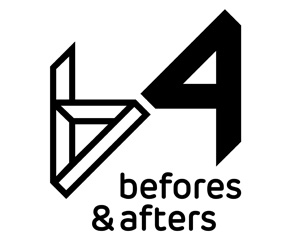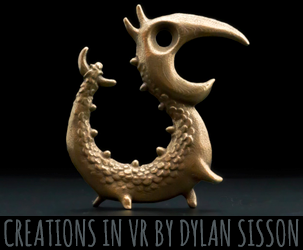


The Mitchells vs. the Machines - Using Art to Save the World
The Mitchells vs. the Machines sends a dysfunctional family on a road trip across the United States, then almost immediately plunges them into a cataclysmic robot uprising. Bursting with comedic energy, the film plays with mixed media and a sketchy animation style, artfully subverting expectations about what an animated feature should look like.
Expectations are further upended by the storyline. In the current round of mainstream Hollywood movies, we are bombarded by stories about “perfect” superheroes. Such films present their creators with a difficult challenge: how to make their superpowered characters relatable to an audience of ordinary people who will never in their lives be able to leap over tall buildings or fly faster than a bullet.
With The Mitchells vs. the Machines, however, writer-directors Mike Rianda and Jeff Rowe have channelled a different kind of superpower: their own understanding that, in the real world, misfits are far more commonplace than superheroes. Celebrating “weirdos,” Rianda and Rowe have chosen as their protagonists a group of ordinary people. The heroism of Katie Mitchell and her quirky family lies in the everyday dimension. It is their very imperfection that makes them relatable, and we as an audience find their flaws endearing because ultimately we all feel that we ourselves are flawed.
Of course, the very goofiness of the Mitchell family also provides an endless source of entertainment – rightly so, since this is, after all, a family comedy. The filmmakers exploit the humor of bathos and hyperbole, permitting their characters to note with dry comic timing that, while some families are grappling with organising their family photo albums, or dealing with picky eaters, the Mitchells have to manage a robot apocalypse. Pop culture references abound, from youth-friendly commentary on the politics of social media, to evocations of classic movies that are sure to please the more mature crowd – In Pal’s geometric core there are echo’s of Stanley Kubrick’s monolith from from 2001: A Space Odyssey.
Hidden beneath this sense of fun is a simple but profound message of reassurance: that it is okay to be odd. This idea is supported by the circular nature of the Mitchell family’s strange odyssey, which begins with the suggestion that their weirdness is something that sets them apart. At the end of the film, however, as we listen to young Katie Mitchell’s speech about why humanity should be saved, we see how this family of misfits has transformed itself into something special and magical. This shows us that the magic exist in our every day lives. We just have to look at it through the right lens. “Weirdness,” it seems,
is what makes us unique.
Turning our attention to the Mitchells’ neighbours – an image-obsessed superhero family call the Poseys – we might even detect echoes of an everyday cultural struggle in which working class people live in passive envy of their apparently perfect upper class counterparts. Social media addicts derive pleasure from both watching and being watched, and so the relationship between ‘weird’ mother Linda Mitchell and her ‘perfect’ counterpart Hailey Posey can be read as a model of mimetic desire. The relationship endures to the end – when Hailey finally demonstrates her new-found acceptance of Linda by allowing herself to follow the Mitchell mother on Instagram, the irony of this gracious gesture is all too apparent.
Expectations are further upended by the storyline. In the current round of mainstream Hollywood movies, we are bombarded by stories about “perfect” superheroes. Such films present their creators with a difficult challenge: how to make their superpowered characters relatable to an audience of ordinary people who will never in their lives be able to leap over tall buildings or fly faster than a bullet.
With The Mitchells vs. the Machines, however, writer-directors Mike Rianda and Jeff Rowe have channelled a different kind of superpower: their own understanding that, in the real world, misfits are far more commonplace than superheroes. Celebrating “weirdos,” Rianda and Rowe have chosen as their protagonists a group of ordinary people. The heroism of Katie Mitchell and her quirky family lies in the everyday dimension. It is their very imperfection that makes them relatable, and we as an audience find their flaws endearing because ultimately we all feel that we ourselves are flawed.
Of course, the very goofiness of the Mitchell family also provides an endless source of entertainment – rightly so, since this is, after all, a family comedy. The filmmakers exploit the humor of bathos and hyperbole, permitting their characters to note with dry comic timing that, while some families are grappling with organising their family photo albums, or dealing with picky eaters, the Mitchells have to manage a robot apocalypse. Pop culture references abound, from youth-friendly commentary on the politics of social media, to evocations of classic movies that are sure to please the more mature crowd – In Pal’s geometric core there are echo’s of Stanley Kubrick’s monolith from from 2001: A Space Odyssey.
Hidden beneath this sense of fun is a simple but profound message of reassurance: that it is okay to be odd. This idea is supported by the circular nature of the Mitchell family’s strange odyssey, which begins with the suggestion that their weirdness is something that sets them apart. At the end of the film, however, as we listen to young Katie Mitchell’s speech about why humanity should be saved, we see how this family of misfits has transformed itself into something special and magical. This shows us that the magic exist in our every day lives. We just have to look at it through the right lens. “Weirdness,” it seems,
is what makes us unique.
Turning our attention to the Mitchells’ neighbours – an image-obsessed superhero family call the Poseys – we might even detect echoes of an everyday cultural struggle in which working class people live in passive envy of their apparently perfect upper class counterparts. Social media addicts derive pleasure from both watching and being watched, and so the relationship between ‘weird’ mother Linda Mitchell and her ‘perfect’ counterpart Hailey Posey can be read as a model of mimetic desire. The relationship endures to the end – when Hailey finally demonstrates her new-found acceptance of Linda by allowing herself to follow the Mitchell mother on Instagram, the irony of this gracious gesture is all too apparent.
This particular dynamic delivers its own share of entertainment to an audience that knows what it is to be the underdog. Watching the film, we experience a certain sado-masochistic pleasure not only in seeing the Mitchells triumph over their adversaries, but also in sharing the various torments they endure themselves.
Yet The Mitchells vs. the Machines also presents us with another juxtaposition: that of a natural world built on love and human values, in contrast to the technological realm of Silicon Valley and social media, where people are caught up in endless images of themselves, not who they really are.
In their own different ways, therefore, the individual members of the Mitchell family are battling not only to defeat the robots, but also to find their true selves. One such route to self-discovery lies in the space of memory – presented in vibrant form throughout the film. By immersing ourselves in the past, we discover a state of being that is more genuine than the cultural state in which we find ourselves today, and within which we can ultimately achieve enlightenment.
The Pater familias (father of the family), Rick Mitchell, seeks such knowledge through his love of nature. A modern-day Luddite, he advises his movie-obsessed daughter, Katie, to look at the world not through her camera lens but with her own eyes, which he describes as ‘nature’s camera.’ And so Rick’s world view aligns closely with the film’s assertion that technology in the wrong hands can be lethal. At the same time, it portrays the tension between father and daughter. Fearful as he is, Rick wants only to protect Katie – part of his journey is learning that the best way to do this is to let her go.
Through all this, it is Katie’s philosophy that ultimately prevails. From her position at the heart of the story, this young girl instantly presents herself as a storyteller, as she attempts to escape reality through the medium of cinema. Katie’s youthful enthusiasm for zany imagery and crazy ideas is mirrored in the dynamic visual style of The Mitchells vs The Machines. Is she in fact the alter ego of the film’s directors? It is hard to argue against the idea.
Katie’s agency in the story is further reinforced by her status as an openly gay character. With seemingly effortless ease, The Mitchells vs The Machines succeeds in broadcasting and celebrating her sexuality – often through simple visual devices such as the rainbow button she wears – while at the same time never drawing undue attention to it. It is rare for the LGBQT community to be represented so naturally in a Hollywood film – especially an animated feature – and this subtle balancing act is to be applauded.
As the robots threaten to overwhelm the planet, it is Katie’s passion for art – and her father’s eventual recognition of arts value – that saves the day. From the beginning, the film demonstrates that Katie’s way of knowing herself and understanding reality is through her art – which she perceives as an expression of her weirdness. And so, it is Katie who teaches us the lesson that lies at the heart of The Mitchells vs The Machines: that art will not only save us in the end, but it will heal us, too.
--
Dr. Maria Elena Gutierrez is the CEO and executive director of VIEW Conference, Italy’s premiere annual digital media conference. She holds a Ph. D from Stanford University and a BA from the University of California Santa Cruz. VIEW Conference is committed to bringing a diversity of voices to the forefront in animation, visual effects, and games. For more information about the VIEW 2021 program of events, visit the official website: http://































